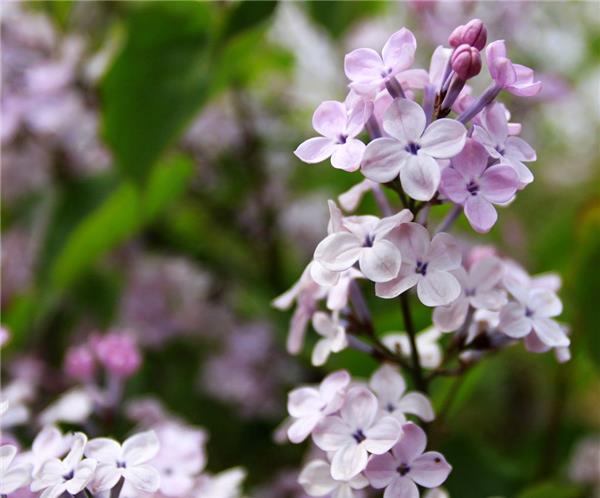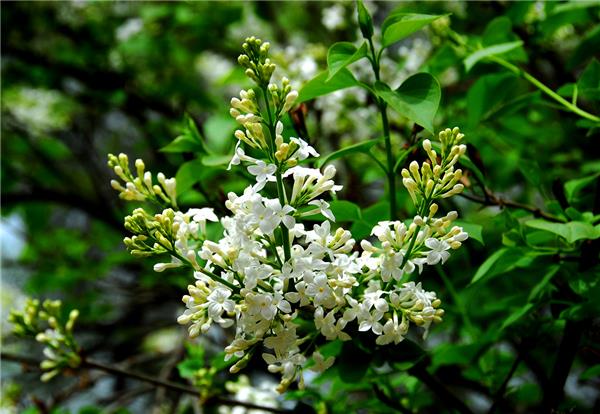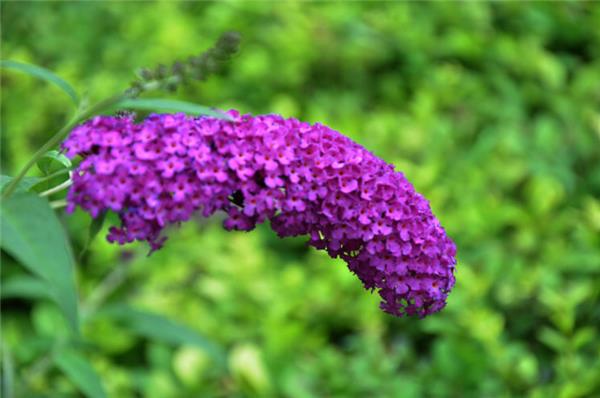When is the lilac blooming? when is the lilac blooming?
Before we learn how to grow and maintain lilacs, let's take a look at different varieties of lilacs and when they usually bloom.

How many months is the lilac blooming?
The flowering period of white clove is from April to May.
The flowering period of blue clove is from April to May.
The florescence of leaflet cloves is from late April to early May and from late July to early August in autumn.
The lilac florescence is from April to May, and the flowers are purple. The lilac blossoms in June, and the flowers are white. The flowering period of lilac in four seasons is from May to October.
All species of lilac can blossom only after sowing 3mi for 4 years. If they are propagated by cutting and pressing, they can blossom after 2-3 years of survival.

Grafting propagation of lilac
1. Grafting: generally carried out before germination in early spring, the length of the scion is 8 to 10 meters, with 2 pairs of bud nodes, and the lower sides of the scion are cut into a bevel. The 2012 clove seedlings are selected for the rootstock, cut off the top at 5 to 10 meters above the ground, split a gap vertically down from the cross section of the rootstock, and then insert the scion.
2. Budding method: the full leaf buds on the sturdy branches of the same year should be selected for the scion, and the 1-to 2-year-old clove seedlings should be selected for the rootstock. When grafting, the leaves on the scion should be cut off, leaving only the petiole, and then cut across 1 cm above the bud, and then cut upward from 1 m to 1.5 m below the bud to peel off the xylem in the cortex. Cross-cut the rootstock from 5 to 10 meters from the ground, then cut a vertical knife about 3 meters long from the middle of the cut to make it in a "T" shape, then gently peel off the skin and insert the scion into the mouth of the "T" word. The scion and the rootstock should be closely matched, and finally tied with plastic film strips.
3. Grafting method: cut an interface of the same size between the clove scion and the rootstock, and tie them closely together. When the knife edge produces callus, the rootstock is cut off from the top branch 1 meter above the interface, and the scion is cut 1 meter below the interface to make it a new plant.

Matters needing attention in the culture of lilac
The main results are as follows: 1. in the early stage, the wind prevention work should be done well before the typhoon, and the trunk of the clove plant can be fixed with rope and bamboo, so as to reduce the shaking of the typhoon to the clove plant and reduce the harm.
2. Weed around clove plants and cover them with grass in July, September and October every year, but do not turn them over with a hoe to hurt Gyabgon. Weeds in other parts of the woodland are cut for ground cover and can also be used as green manure to cover the ground instead of natural vegetation. Weeding works until the canopy closes and inhibits the growth of weeds.
3. After planting 3-4-year-old seedlings, strong pruning should be carried out near the branches on the ground, that is, the branches should be cut off from 30 feet above the ground, and strong branches will grow soon after they are cut off, so that the crown will be plump, and luxuriant flowers will bloom in the second year.
4, lilac sex like sunshine, slightly shade, like moisture, avoid stagnant water, cold and drought resistance, generally do not need more watering. It requires fertile sandy loam with good drainage. If planted in a shady environment, the branches are slender and weak, the inflorescences are short and loose, and the flowers are not glossy. If planted on barren land, it can grow, but the flowers are not small, and the growth is thin. Therefore, it is appropriate to plant in the sunny, fertile, deep soil.
5. When the weather is dry in spring every year, the buds should be watered once before and after flowering. Cloves do not like big fertilizer, do not fertilize too much, otherwise it is easy to cause overgrowth and affect flowering. Generally, the nutrients in the soil can be replenished by applying rotten compost once a year or every other year before winter. Only in this way can the lilacs bloom normally.
6. Turning the basin every 2-3 years, combined with turning the basin, pruning the root system, removing part of the old root and over-growing root system, removing the 1B2 old soil and replacing it with new culture soil, so as to facilitate the root system development, leaf lush and flower multiplication.

In addition, we should also take good care of the lilacs in terms of watering, light, temperature, diseases and insect pests, otherwise we may not be able to see the beautiful posture when the lilacs bloom, which will be a very regrettable bedtime.
Related
- Wuhan Hospital Iron Tree Blooming Result Was Instantly Frightened by the Gardener Master
- Which variety of camellia is the most fragrant and best? Which one do you like best?
- What is the small blue coat, the breeding methods and matters needing attention of the succulent plant
- Dormancy time and maintenance management of succulent plants during dormancy
- Minas succulent how to raise, Minas succulent plant pictures
- What are the varieties of winter succulent plants
- How to raise succulent plants in twelve rolls? let's take a look at some experience of breeding twelve rolls.
- Attention should be paid to water control for succulent plants during dormant period (winter and summer)
- Watering experience of twelve rolls of succulent plants
- Techniques for fertilizing succulent plants. An article will let you know how to fertilize succulent plants.



